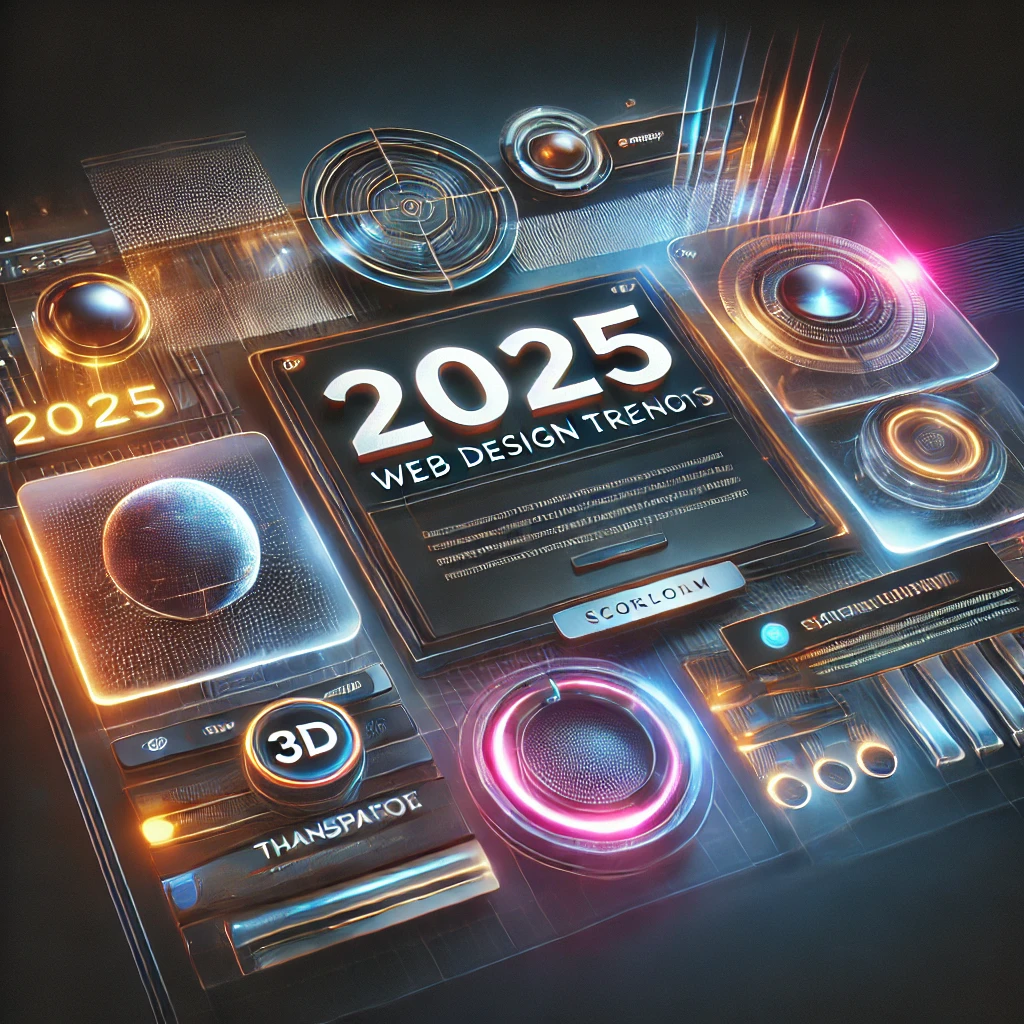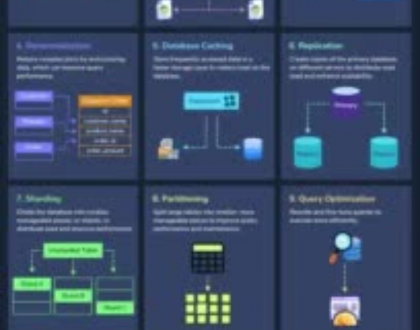6 web design trends to watch in 2025

Introduction
The world of web design and development is buzzing with creativity and innovation that is reshaping how we think about digital experiences.
What we’re seeing isn’t just a parade of fresh new aesthetics, but a genuine explosion of technological possibility. From AI-generated visuals to mind-bending 3D interactions, creatives and developers are exploring tools and techniques that push the boundaries of digital design.
But here’s the thing: chasing trends should never really be the end goal. The real power of tracking trends is using them as sources of inspiration for your creative toolkit — drawing inspiration from them to inform strategic choices that authentically serve your objectives as you embark on new projects.
From the manipulation of light and aesthetics with a retro, nostalgic feel to the continued adoption of AI, here’s our roundup of the leading web design trends to watch in 2025.
1. Futuristic, sci-fi gaming UI aesthetics
Many gaming UIs feature glowing edges, holographic effects, and complex motion graphics, inspiring web designers to adopt futuristic aesthetics. This trend brings 3D depth, intricate UI details, and microinteractions to websites, creating high-tech, immersive experiences. With translucent panels, AR-inspired visuals, and neon accents, these designs blend sci-fi style with intuitive navigation for a cutting-edge digital experience.
2. Window and shadow overlays
The trend of window and shadow overlays in web design brings depth and realism to digital interfaces. Inspired by product design mockups, these soft, natural shadows mimic light cascading across surfaces, creating a sense of dimension and hierarchy. This technique subtly bridges the digital and physical worlds, adding sophistication and approachability to websites. As Corey Moen from Webflow notes, it’s a modern take on skeuomorphism, reimagined for today’s web design landscape.
3. Glow effects
It feels like now more than ever, designers are embracing the use of luminous aesthetics that include sophisticated glows and light blooms. This approach transforms designs into vibrant, almost ethereal experiences that create depth, emphasize interaction, and introduce a sense of dynamic energy. “Glows can be used to serve greater functional purposes: to enhance and feature different aspects of design compositions and illustrate a sense of power,” says Johnnie Gomez Alzaga, Staff Brand Designer at Webflow.
With traces back to everything from digital photography, to video games, to Y2K aesthetics, these radiant effects simulate the way light interacts with surfaces in both digital and physical environments. More specifically, they often mimic the way light behaves on high-end displays and advanced screens, borrowing visual language from OLED technologies and retina displays.
Glows subtly draw attention to interactive elements, create a sense of depth, and provide visual feedback that makes websites feel more responsive. Designers strategically use them around buttons, navigation elements, and key visual components to create a sense of illumination and realism.
These light effects range from subtle, almost imperceptible halos to more dramatic, vibrant blooms that seem to pulse and breathe as users interact with them. “Glows are a way to incorporate hardware materiality into a website. They’re challenging to realistically build, making them a great focus piece for designers, but they also support a page’s function by pulling users’ eyes towards the area they should focus on,” explains Meg Wayne, Staff Brand Designer at Webflow.
By simulating the way light naturally diffuses and reflects, the use of glows suggests movement, responsiveness, and a kind of luminescence that makes web experiences feel more alive and interactive. This technique also mirrors advancements in tech: as screens become more high-definition and our digital experiences become more immersive, these light and glow effects represent an emerging, nuanced approach to making web design feel more human, more responsive, and more connected to our sensory experiences of light and interaction.
4. Flash-era nostalgia
Are you old enough to remember when navigating websites felt like stepping into a game, where every hover and click triggered dynamic animations? Well lucky for you, it looks like the Flash aesthetic is cool again, blending the nostalgia of the wild, experimental web of the late 90s and early 2000s with the power of contemporary digital creativity and tooling.
In its heyday, Adobe Flash transformed websites from static information repositories into dynamic, interactive playgrounds. Designers were able to create intricate animations, immersive experiences, games, and websites that were inherently interactive. It was an era marked by design that celebrated and prioritized experience over pure functionality — and where websites could be unpredictable, whimsical, and entirely unique.
Today’s designers are recapturing that spirit of creative freedom, but with significant improvements thanks to modern animation and design technologies like GSAP (whose parent company was recently acquired by Webflow), Rive and Spline.
But it’s important to note that this trend goes beyond mere technical recreation. Designers are deliberately invoking the playful, slightly chaotic aesthetic of early web experiences — bringing back bold animations, unexpected interactions, and a sense of digital spontaneity.
“The early web felt human and subversive, full of internet art, interactivity and sparkly cursors,” Cassie Evans, Developer Relations Engineer at GSAP, observes. “With the death of Flash, we swung back hard in the other direction – looking at you Web2.0 – but it feels like the cultural pendulum is stabilizing again. Animated loaders are back (contentious, I know), alongside fun 404 pages, konami codes, and cursor interactions. It feels like people are pushing the boundaries again, crafting a little human high-five from creator to user across the internet, which, in an era of algorithmic feeds and AI-generated content, is more important than ever.”
5. Sophisticated, animated scrolls
Scrolling has evolved from simple navigation to a dynamic storytelling tool, creating depth, narrative, and excitement in web experiences. Advanced scroll-based animations now respond to user movements, revealing content, triggering animations, and crafting immersive visual stories.
This trend is powered by faster devices, browsers, and improved bandwidths, enabling seamless animations. Scroll-triggered interactions feel more natural, aligning with user actions rather than timed sequences. Tools like Three.js and GSAP are driving innovations in data and product visualizations, transforming pages into interactive, multi-layered experiences.
Users are no longer passive viewers; they actively explore and engage with content, making web interactions more memorable and impactful.
6. AI-generated imagery
Perhaps the most controversial trend on this list, it’s hard to ignore how the use of AI-generated visuals and imagery is catching on in web design. The applications for AI-powered image creation today now range from prototyping and creative exploration to full on production-ready imagery.
AI tools can provide the power and ease designers need when they want to explore visual concepts. From detailed, stylized illustrations to hyper-realistic product visualizations, AI-generated imagery allows for a level of creative exploration that previously may have been too expensive or time-consuming to undertake otherwise.
Simultaneously, tools like Midjourney and Visual Electric have changed the game when it comes to using AI to generate custom, highly-stylized imagery and illustrations. And these aren’t just solutions for non-designers; a growing number of seasoned creative professionals are actively incorporating AI-generated visuals into their designs depending on project needs.
This is a notable shift from the traditional methods of how visual content has been conceptualized and created, but one that design leaders like Pentagram’s Paula Scher welcomes, who recently defended her agency’s use of Midjourney for a government website.
Generative AI is reshaping the entire concept of visual design, challenging traditional boundaries between generated and created imagery. And the designers embracing it are also increasingly becoming orchestrators of visual generation, using AI as a powerful creative tool that extends their own creative capabilities.
Technology continues to shift which trends come into view
As we look ahead, web design and development will continue to evolve at an unprecedented pace, driven by technologies that push the boundaries of motion, interactivity, and visual design.
Technology has steadily been transforming static screens into living canvases, and the use of tools like GSAP, LottieFiles, and WebGL is blurring the lines between interfaces and imagination. Wayne explains these interaction technologies don’t simply enable us to build truly unique websites: “They also challenge our commitment to performance and introduce intricate layers of problem-solving for the user experience. Immersive site builds call for a thoughtfully crafted blend of techniques, making them genuinely compelling to develop.”
Web design trends serve as great sources of inspiration, and we hope to see you start implementing some of these into your work to create sleek, performant, and interactive web experiences. If you’re looking for even more inspiration for your next project, explore designs Made in Webflow from members of our community.
Conclusion
Web design in 2025 is a blend of creativity, technology, and user-focused innovation, redefining how digital experiences are crafted. Trends like sci-fi aesthetics, dynamic scrolling, glow effects, and AI-generated imagery are shaping websites into immersive, interactive platforms. At Intertoons.com, we embrace these advancements to deliver cutting-edge web design solutions tailored to your business needs.
By leveraging the latest trends, we help brands create visually stunning and user-friendly websites that leave lasting impressions. If you’re ready to take your web design to the next level, explore our services at Intertoons.com and let us turn your vision into a digital masterpiece.
Recommended Posts

12 Proven Ways to Improve Database Performance
April 29, 2025


